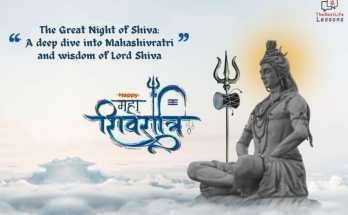In the history of the independence of India, there are some events that are ferocious and horrific. Among of these is the infamous incident of Jallianwala Bagh, known as Jallianwala Bagh Massacre or Massacre of Amritsar. Even after hundreds of years, whenever any Indian remembers this heinous act of the British government, it still causes them to seethe with pain and rage.
The massacre of Jallianwala Bagh happened on 13th April, 1919 in Jallianwala Bagh, situated in Amritsar, Punjab. This is marked as the black day in the history of India because on this day the British government, which was ruling over India at that time; open fired on the Indians who were unarmed and had gathered in the Jallianwala Bagh. It led to the killing of hundreds of innocent, unarmed Indians, whereas thousands of more were injured. This year marks 104 years since this tragedy took place taking hundreds of lives. In 1951, the Indian government built a 30-feet-high monument in the memory of those who were killed and wounded in the massacre.
Table of contents:
- Introduction
- What led to the occurrence of this brutal act in Jallianwala Bagh?
- Occurrence of the Jalliawala Bagh Massacre
- After-effects of the incident
- Remembering the Jallianwala Bagh Massacre
So, what led to the occurrence of this brutal act in Jallianwala Bagh?
The incident occurred at the times of World War I. While the World War was going on, the British government sensed growing nationalist activities among Indians and to put a halt to it, the Rowlatt Act was passed on March 10,1919 by the British government, headed by Sydney Rowlatt. This act allowed the British government to detain any Indian who works towards any rebellious activities and to put him in jail without any trial or bail.

This black act of the British government gave rise to the Satyagrah Movement by Mahatma Gandhi and on April 7, 1919, he published an article on Satyagrah which gained a great response and support from Indians. Two independence activists, Saifuddin Kitchlew and Satyapal held a peaceful protest against the Rowlatt act in Amritsar but where detained by the British force on 10 April, 1919. In lieu of which, the British government put the martial act in action which banned any public gatherings in Punjab.
Unaware of this the martial law, the Indians gathered in Jallianwala Bagh on April 13, 1919 to celebrate the Baisakhi and to protest against the arrest of the two famous activists.
Occurrence of the Jallianwala Bagh Massacre
When the acting military commander of British Army Amritsar; Brigediar- General Reginald Dyer came to know about this gathering he ordered all his militants to seal the exit of Jallianwala Bagh and enclosed it from all the sides. He ordered them to open fire on the crowd of Indians gathered there without any prior warning, which led to the killings of hundreds of unarmed innocent civilians. Since, there was only one exit to to the Jallianwala Bagh which was already sealed by the Dyer, so all the efforts of Indians to escape the place went in vain. Hundreds were killed while about 200 fell into the well and more than a thousand were injured in this vicious incident. The British force fired on them till they ran out of the ammunition and after that they fled the place leaving behind thousands of Indians dead, crying and yearning in pain. The killings included children, men, women of all ages and elderly people too. Since that day , this day is celebrated as the black day in the history of India. The marks of the bullets fired can still be seen on the walls of Jallianwala Bagh.
After-effects of the Jallianwala Bagh Massacre
This incident acted as a strong turning point in the history of independence of India and it caused Indians to get awake and to fight for their freedom, independence and rights. The barbaric attack of the British government was heavily condemned by many Indians, including Rabindranath Tagore, Mahatma Gandhi and by British people like Winston Churchill, whereas Michael O’Dwyer who was the lieutenant governor of Punjab at that time, supported and approved this action grealty.
So, to take revenge for these thousands of innocent killings, Sardar Udham Singh the freedom fighter of India on March 13, 1940, shot down Michael Dyer in the Caxton hall in London. Due to which, he was arrested and hung down later. But his sacrifice gave rise to a wave of rage and strength among Indians to gain freedom from the British.
Remembering the Jallianwala Bagh Massacre
Although it is considered as the darkest day in the history of India, which occurred during the independence movements but it surely gave rise to the young freedom fighters who fought for the freedom of India and, after so many years of struggle and sacrifices, they finally got India free from the British rule on 15th August, 1947.
Even today, this incident remains to inspire youngsters to stand up against injustice and to fight crime. The remembering of this act will surely continue to instill the great feeling of patriotism and sacrifice among Indians.



